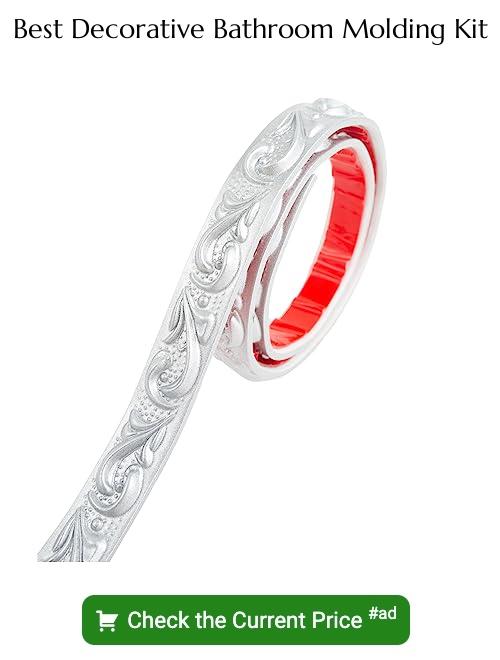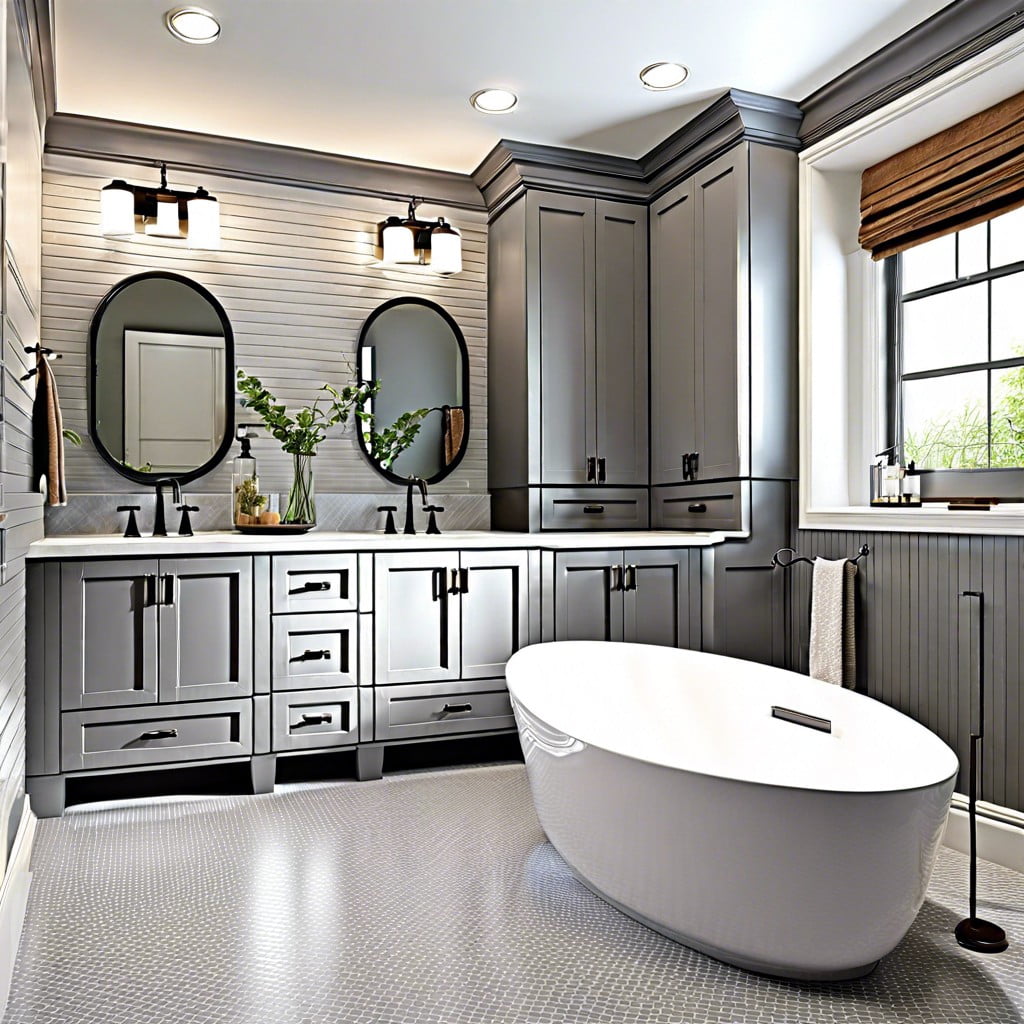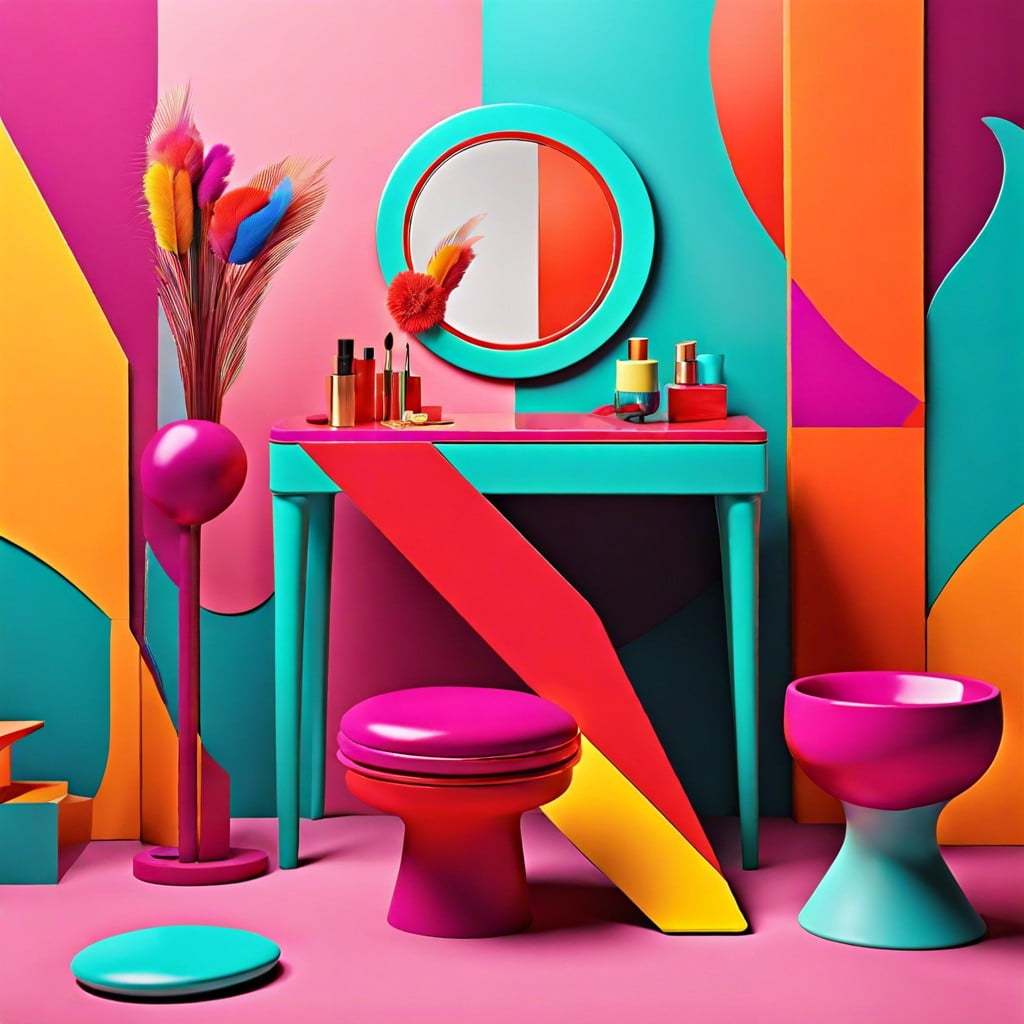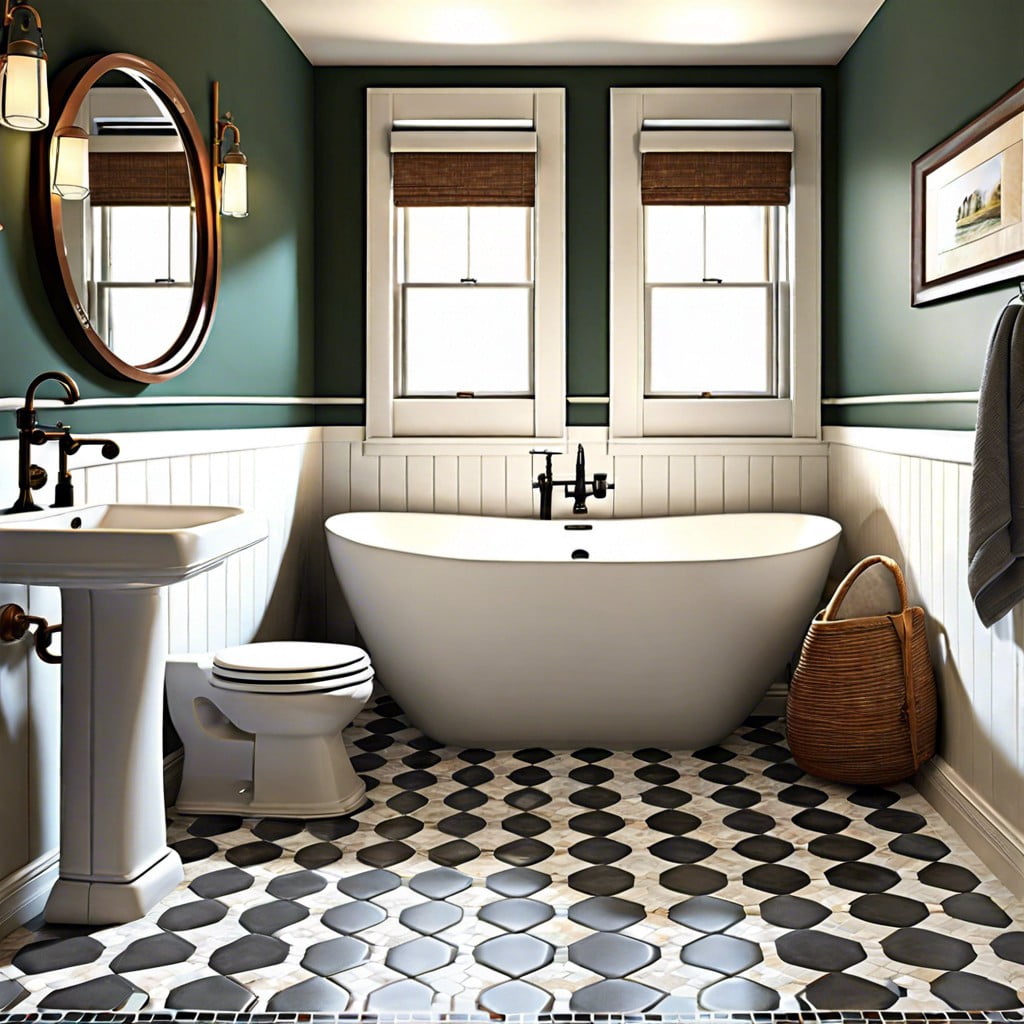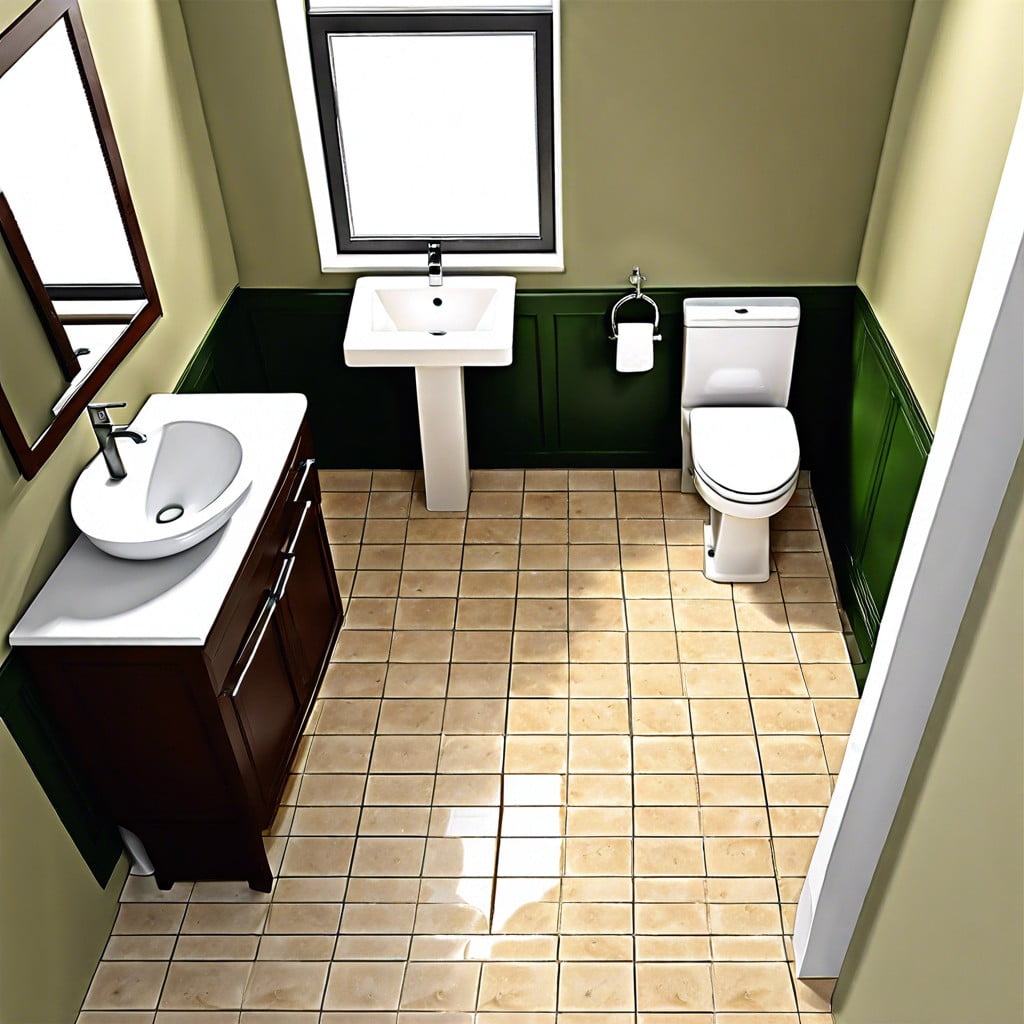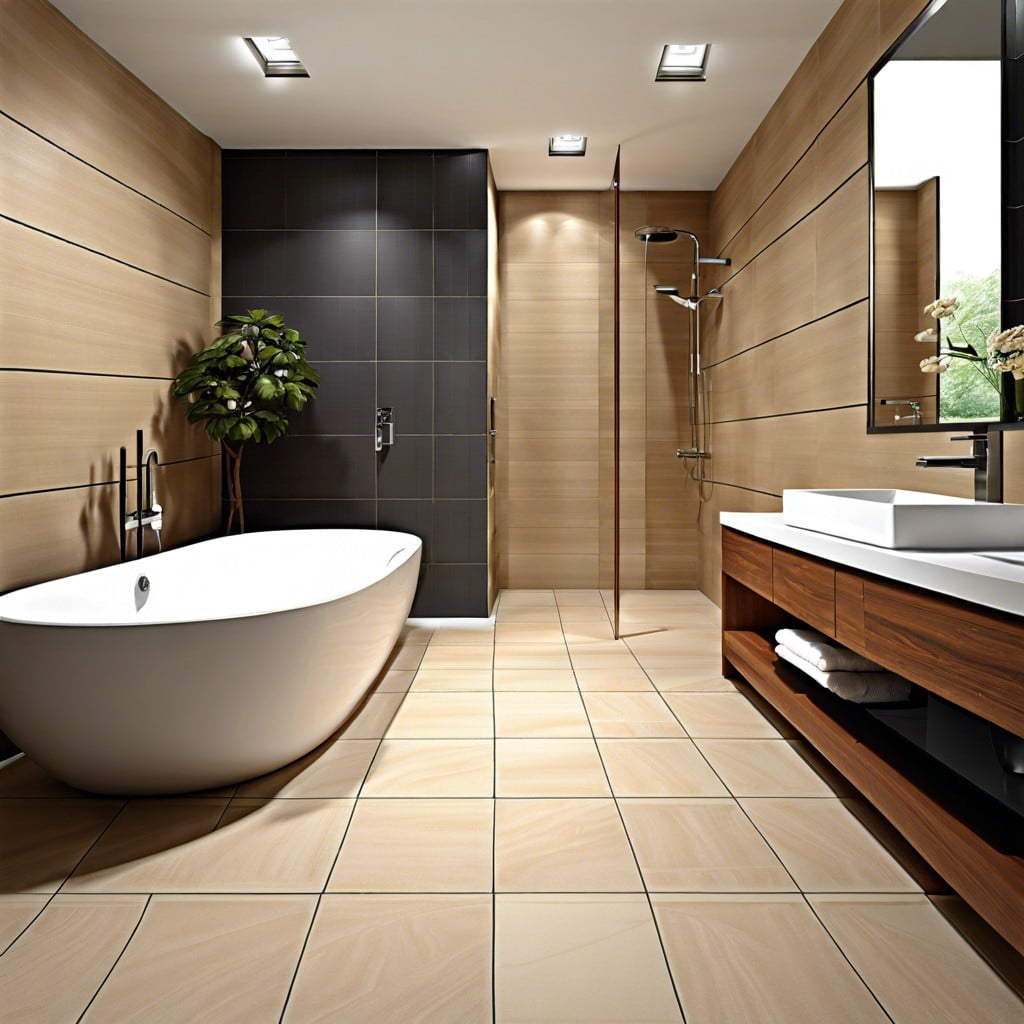Last updated on
Discover a variety of bathroom molding ideas that will transform your space, enhance its visual appeal, and add a touch of elegance to your daily routines.
Welcome back, dear readers! Today’s topic is all about bathroom molding and how it can transform your space into a stylish oasis. Molding is an often overlooked aspect of bathroom design, but it can truly make a difference in the overall look and feel of your space.
From classic crown molding to modern geometric patterns, we’ve rounded up 20 ideas that will inspire you to add some character and charm to your bathroom. So grab a cup of coffee and get ready for some serious inspiration!
White Crown Molding
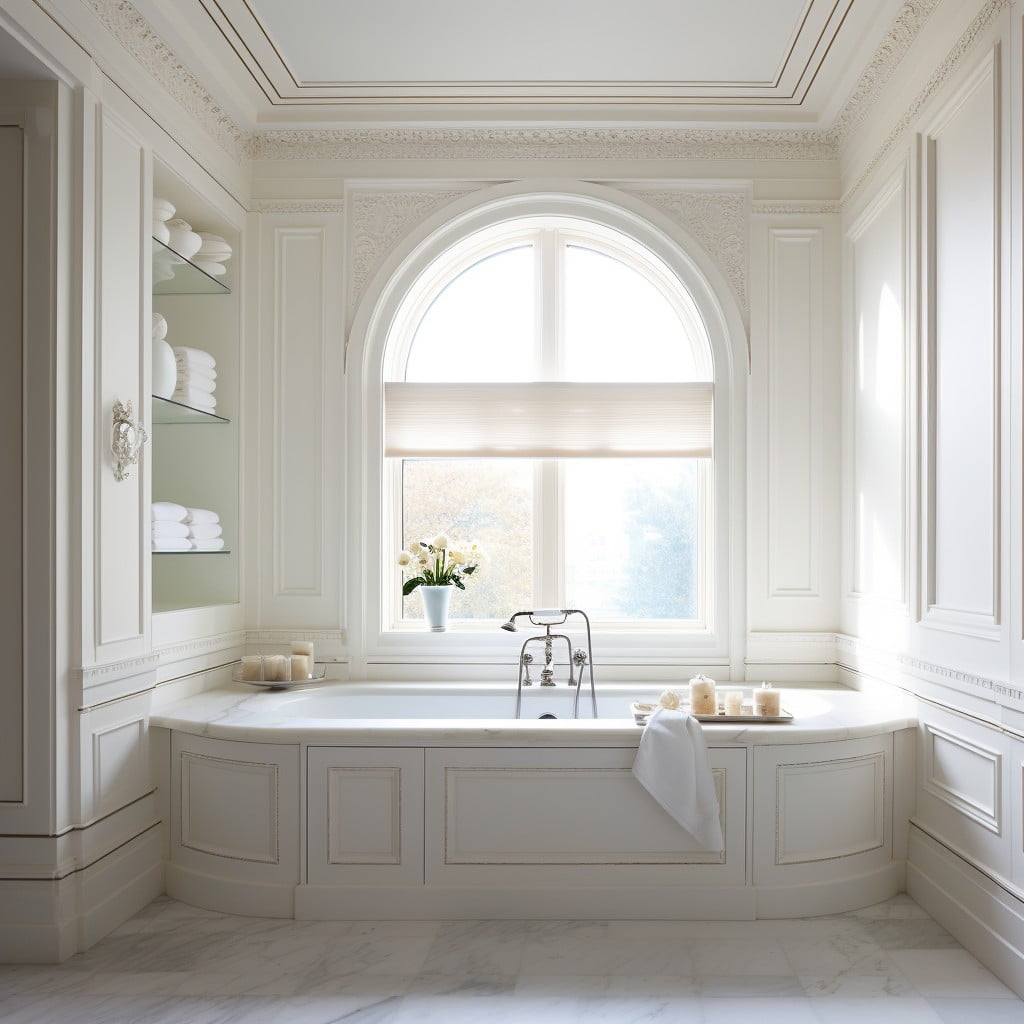
White crown molding is a classic choice for any bathroom. It adds elegance and sophistication to the space, making it feel more luxurious.
White crown molding can be paired with any color scheme or design style, from modern to traditional. It also helps to visually separate the walls from the ceiling, creating a clean and polished look.
When choosing white crown molding for your bathroom, consider selecting one that has intricate details or patterns for added interest and texture in the room.
Beadboard Wainscoting
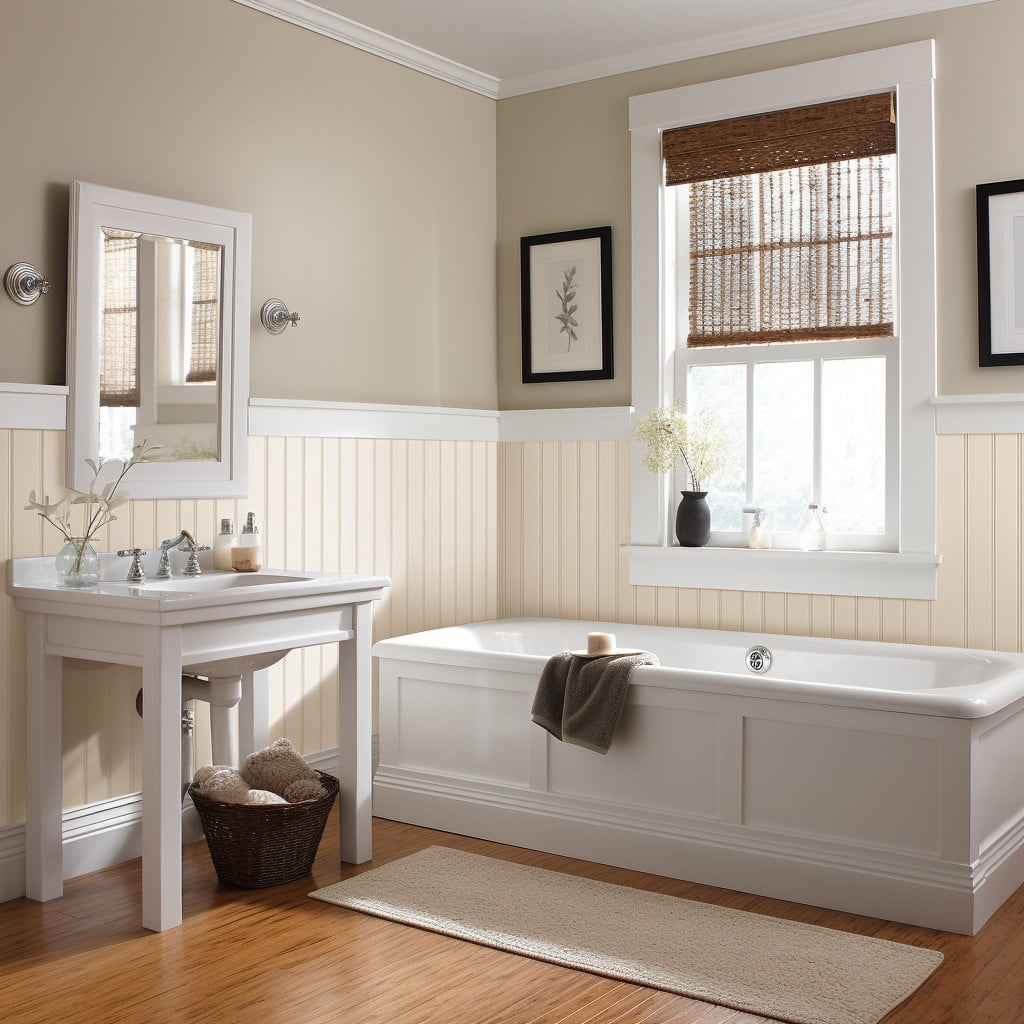
This type of molding consists of narrow, vertical planks that are installed on the lower half or two-thirds of the wall. Beadboard can be painted in any color you like, but white is a popular choice for its clean and fresh look.
It’s also easy to install yourself with some basic carpentry skills, making it an affordable DIY project that can transform your bathroom in just one weekend. Whether you prefer traditional or modern decor styles, beadboard wainscoting adds charm and character to any space while protecting your walls from moisture damage at the same time.
Chair Rail Molding
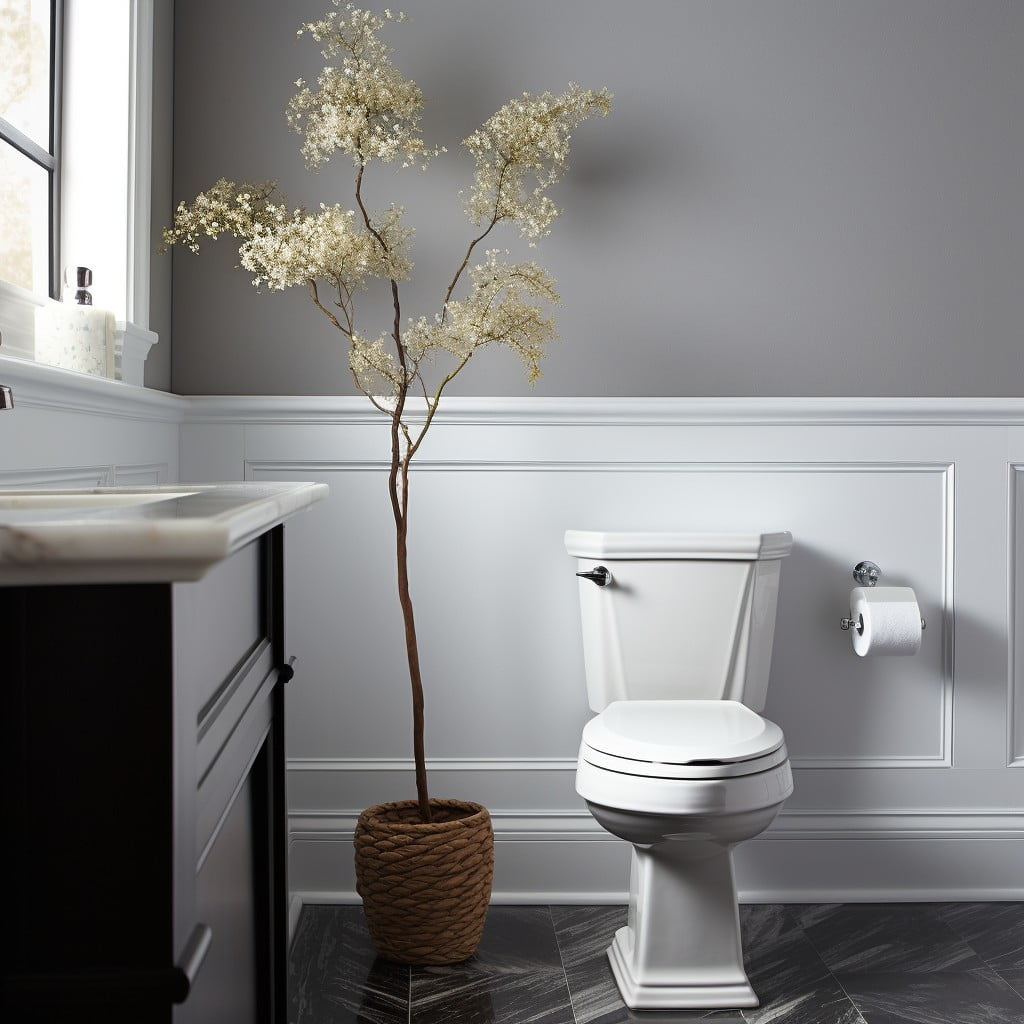
This type of molding is typically installed at the height of a chair back, hence its name. Chair rail molding can be made from wood, plaster or even PVC materials and comes in various styles such as simple flat designs or more ornate profiles with intricate details.
One popular way to use chair rail molding in the bathroom is by pairing it with beadboard wainscoting below it for a traditional look. Alternatively, you could paint the wall above and below the chair rail different colors for an eye-catching contrast.
When choosing your chair rail design, consider how it will complement other elements in your bathroom such as tile patterns or vanity finishes.
Shiplap Walls
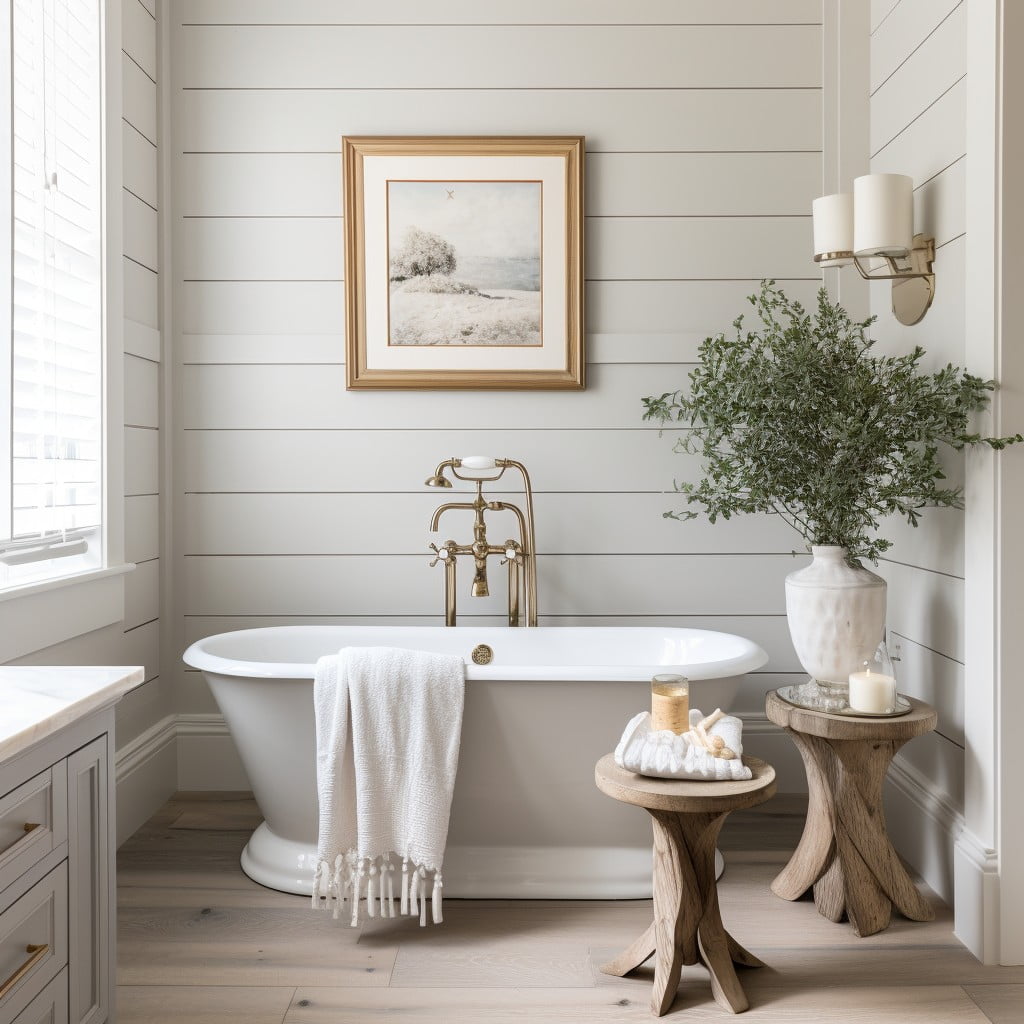
This type of paneling is made up of long, overlapping boards that create a horizontal pattern on the wall. Shiplap can be painted in any color or left natural for a rustic look.
It’s also versatile enough to work with many different design styles, from farmhouse chic to coastal-inspired decor. To install shiplap in your bathroom, start by measuring the space and purchasing enough boards to cover the area you want to transform.
Then use nails or adhesive glue (depending on your preference) and follow installation instructions carefully for best results!
Picture Frame Molding
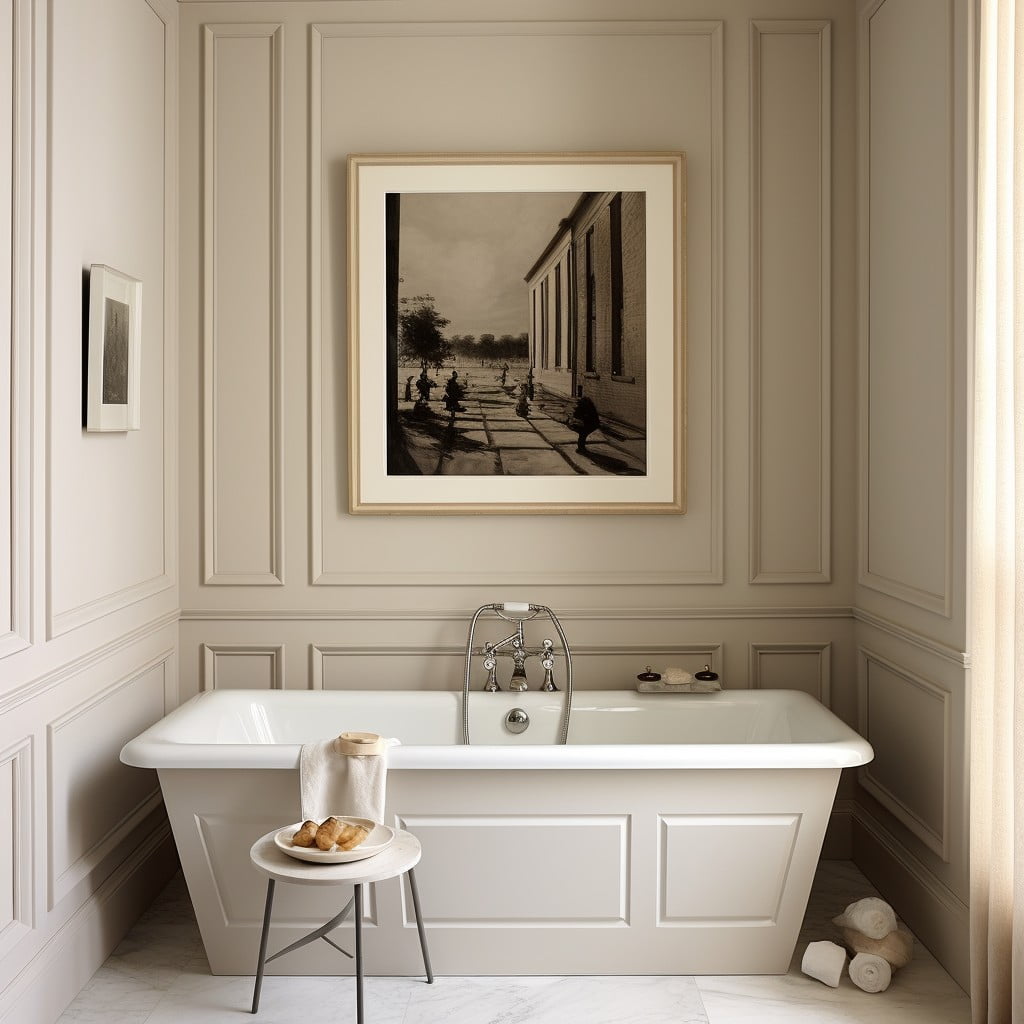
This type of molding creates the illusion of a picture frame around any area you choose, such as a mirror or artwork. It can be installed horizontally or vertically depending on the look you want to achieve.
Picture frame molding comes in various styles and sizes, from simple rectangular shapes to more intricate designs with curves and angles. You can paint it in any color that complements your bathroom decor for an added pop of interest.
With picture frame molding, you’ll have an easy yet elegant way to elevate your bathroom’s style without breaking the bank!
Marble Trim
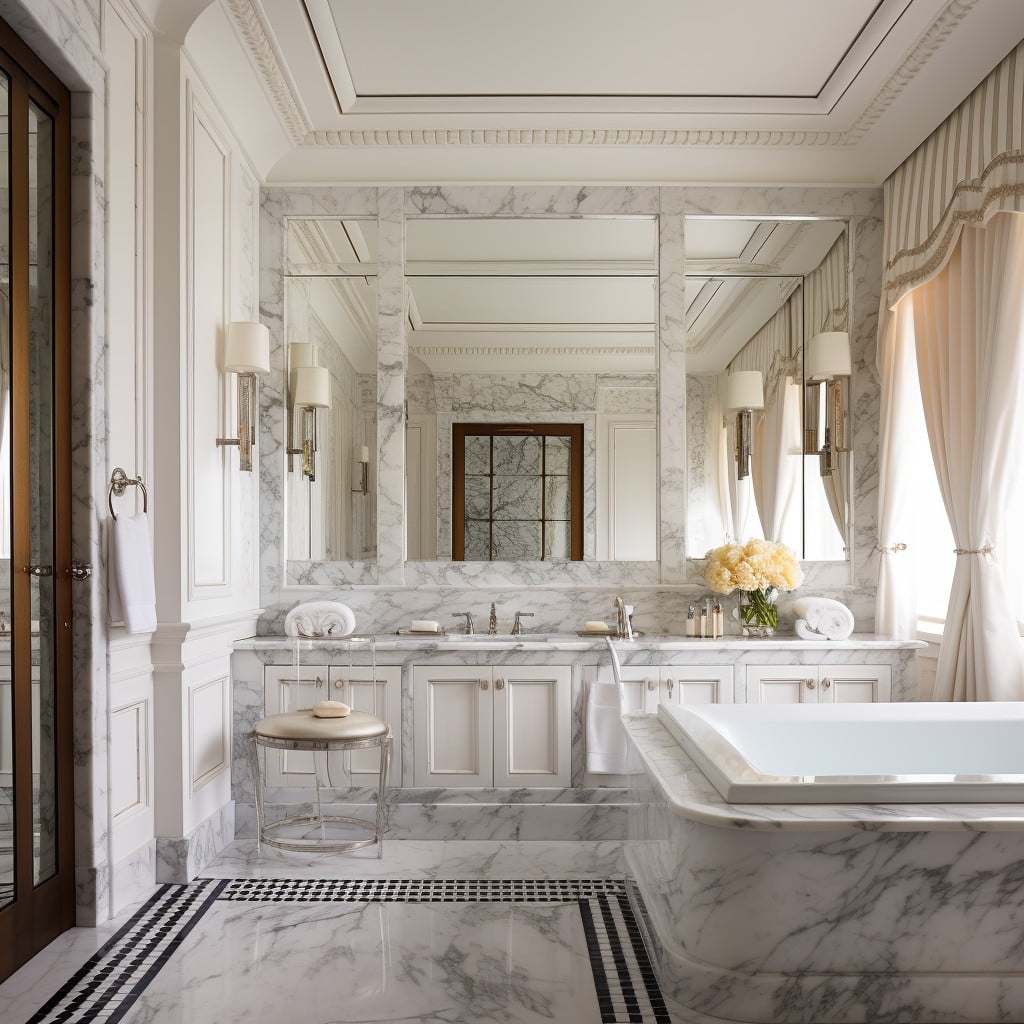
It adds an elegant touch and can make the space feel more high-end. Marble can be used in various ways, such as around the bathtub or shower, on countertops or even as baseboards.
The natural veining of marble creates a unique pattern that will add character to your bathroom design. Keep in mind that marble requires regular maintenance and sealing to prevent staining and damage from moisture over time.
If you’re looking for a way to elevate your bathroom’s style, consider incorporating some beautiful marble trim into your design scheme!
Metallic Accents
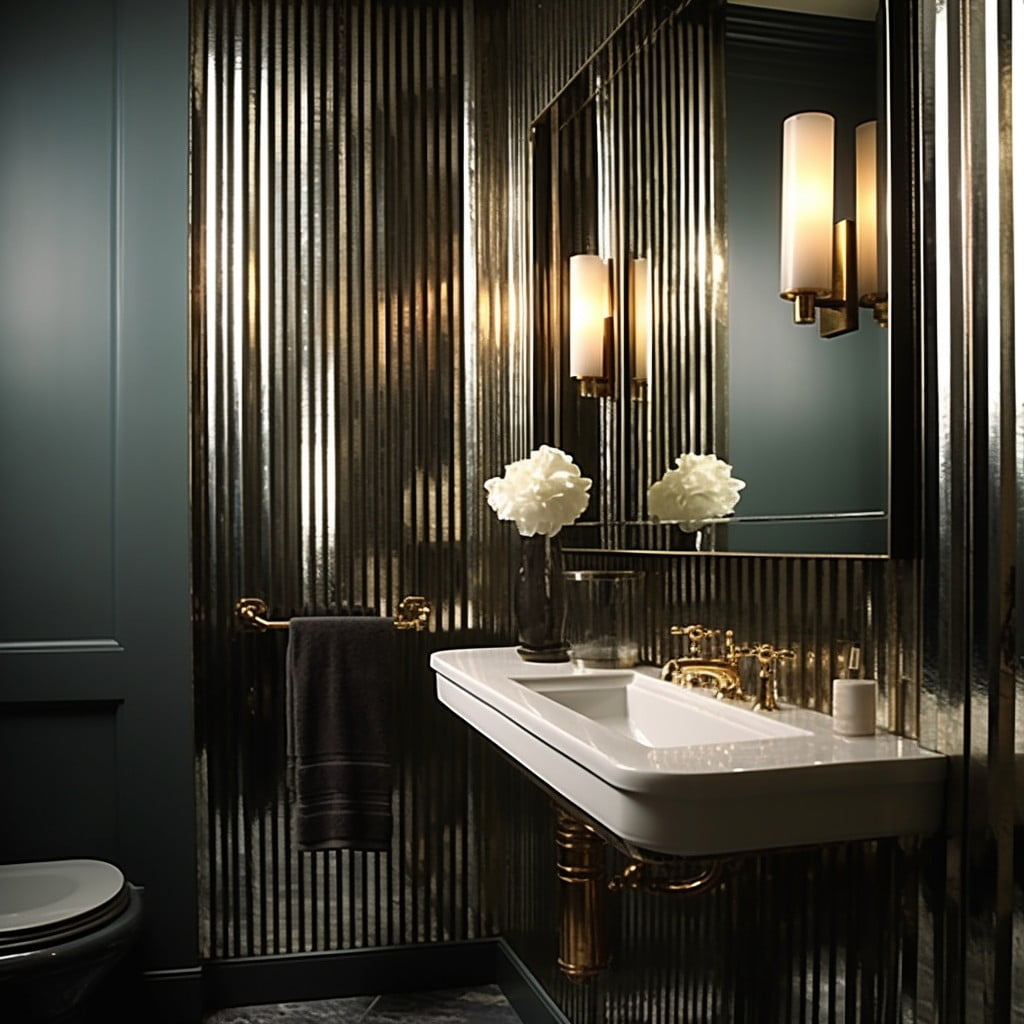
You can use metallic paint or wallpaper with a metallic finish for an easy DIY project. Alternatively, you can opt for metal trim pieces such as stainless steel or brass that will give your bathroom an industrial look.
Another option is to incorporate mirrored tiles into the molding design, which will reflect light and make the space appear larger. Whatever type of metallic accent you choose, it’s sure to bring some sparkle and sophistication into your bathroom decor!
Ceiling Medallion
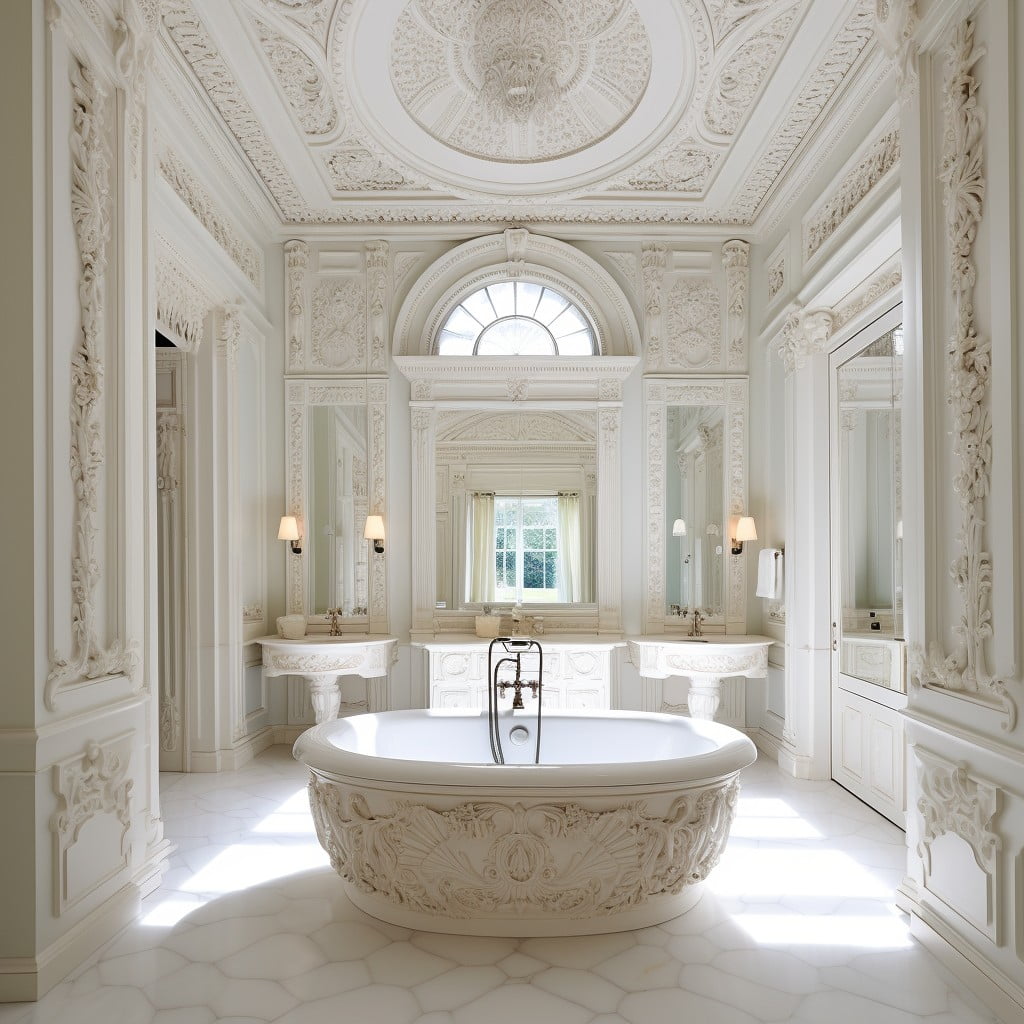
These decorative pieces can be made of plaster, wood, or even metal and come in various sizes and designs. They are typically installed around the light fixture on the ceiling but can also be used as standalone decor elements.
When choosing a ceiling medallion for your bathroom, consider the size of your space and existing decor style. A larger medallion with intricate details would work well in a spacious traditional-style bathroom while a smaller one with simple lines would complement modern minimalist design.
Installation is relatively easy; however, it’s best left to professionals if you’re not experienced with electrical wiring or working on ladders.
Tongue and Groove Paneling
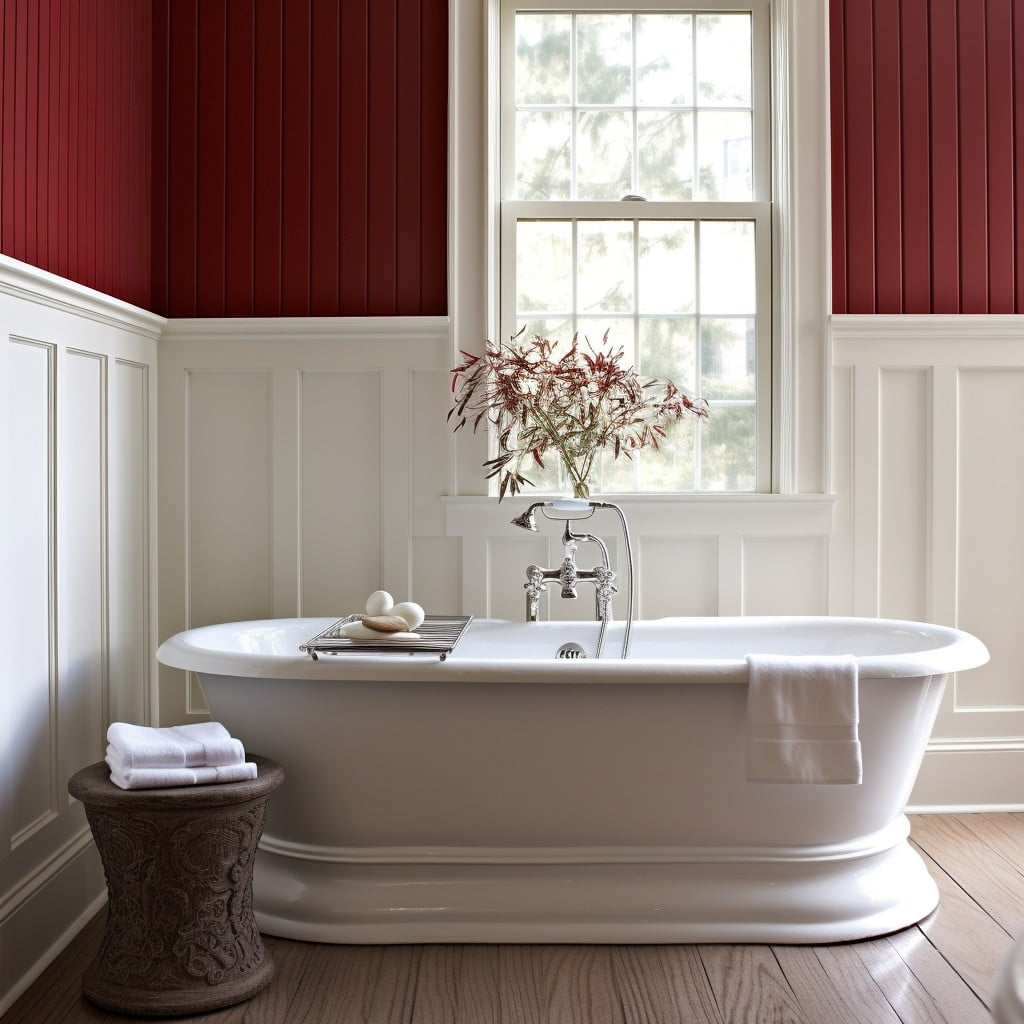
This type of paneling features interlocking boards that fit together seamlessly, creating a smooth and polished look. Tongue and groove paneling can be made from various materials such as wood or PVC, making it versatile in terms of style options.
One popular way to use tongue and groove paneling in the bathroom is to install it on the walls up to chair rail height, then paint the upper portion of the wall above it with a complementary color. This creates an elegant two-tone effect that adds depth and interest to any space.
Another option is using tongue-and-groove panels on both walls and ceiling for an all-encompassed look that gives off cozy cabin vibes while still being chic enough for modern homes.
Tile Border
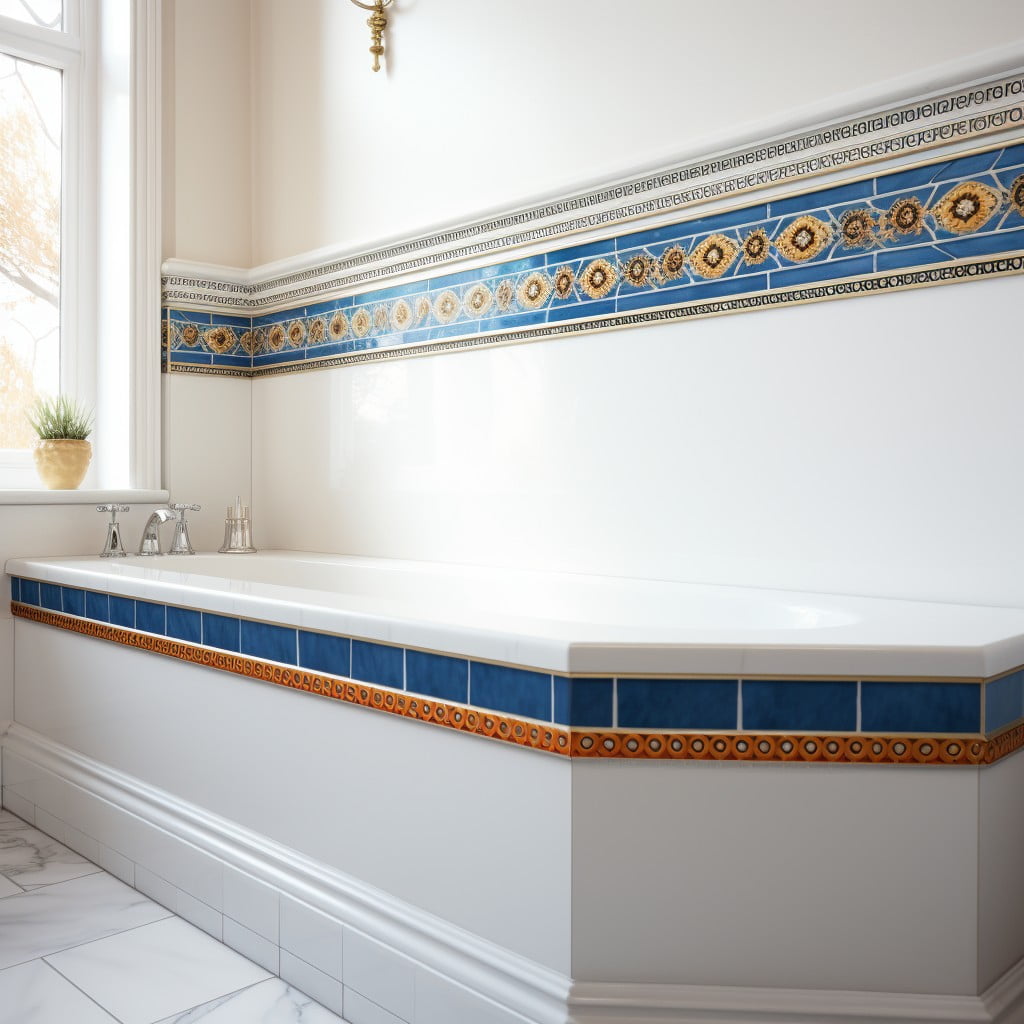
It can be used as an accent or a divider between different types of tiles, such as subway and mosaic. A tile border can also create the illusion of height by running it along the top edge of the shower enclosure or around the perimeter of the room near ceiling level.
The possibilities are endless when it comes to choosing colors, patterns, and shapes for your tile border – from classic black-and-white checkerboard to colorful Moroccan-inspired designs. Just make sure that you choose a complementary grout color that will enhance rather than detract from your chosen tiles!
Two-tone Painted Molding
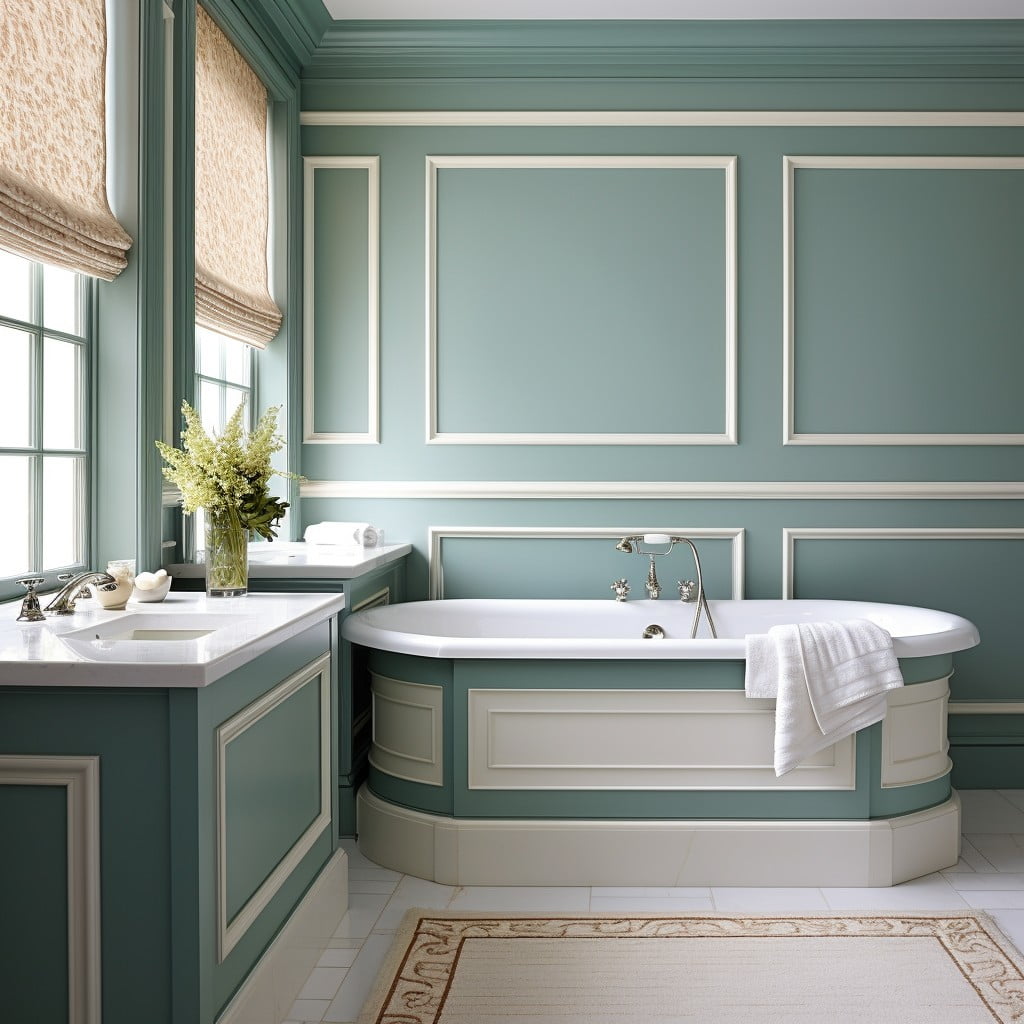
This technique involves painting the baseboard and crown molding in different colors, creating a striking contrast between the two. For example, you could paint the baseboard in a dark navy blue and the crown molding in crisp white for an elegant nautical look.
Or try pairing light gray walls with black trim for a modern twist on classic design.
To achieve this look, start by selecting your color scheme. Choose colors that complement each other or create high contrast depending on your preference.
Next, tape off both moldings using painter’s tape before applying paint with brushes or rollers.
When it comes to choosing which part of the moldings should be painted which color – there are no strict rules! You can experiment with different combinations until you find one that works best for you.
Carved Wooden Trim
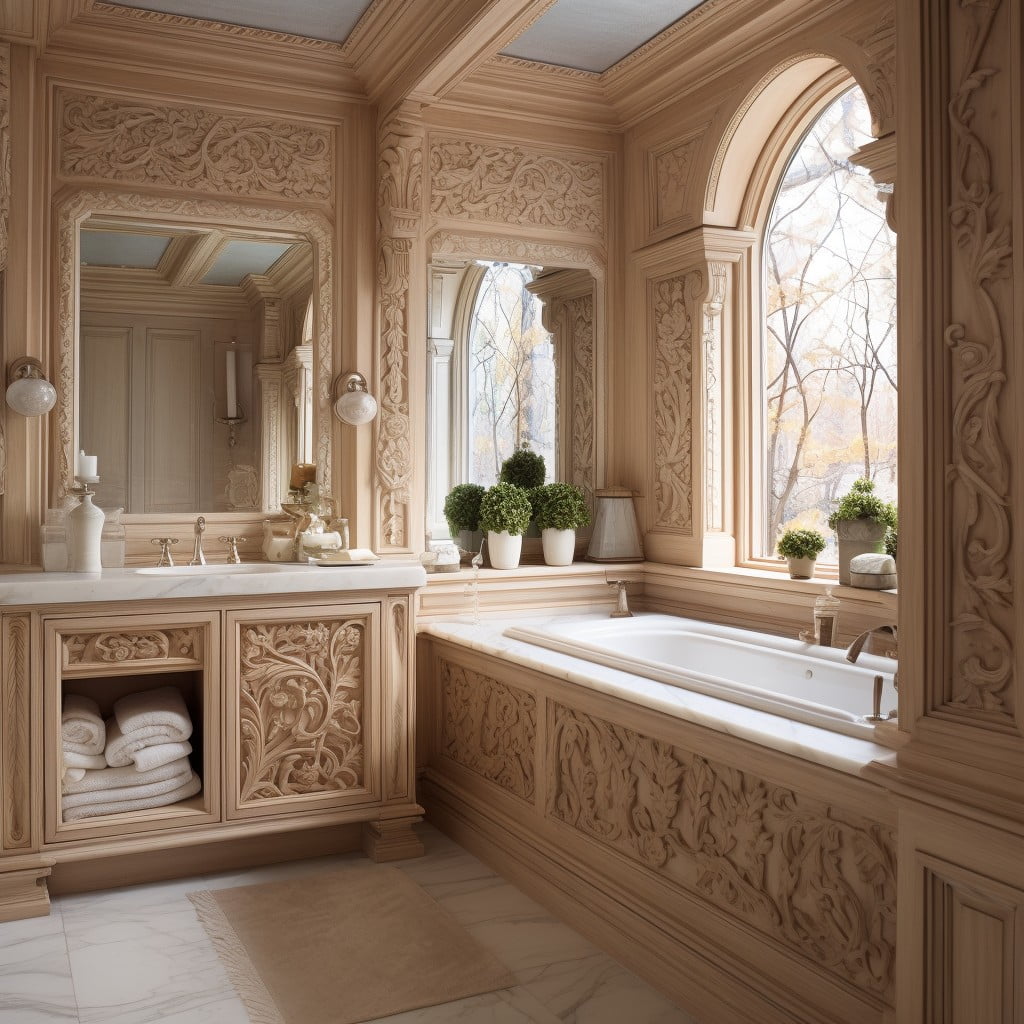
It adds texture, depth, and character to the space. The intricate designs of carved wood can range from simple patterns to more elaborate motifs that resemble works of art.
This type of molding can be stained or painted in any color to match the existing decor or create contrast with other elements in the room. Carved wooden trim is perfect for traditional-style bathrooms but it can also work well in modern spaces when paired with sleek surfaces such as glass shower enclosures or minimalist vanities.
When choosing carved wooden trim, make sure it complements other design features like flooring and cabinetry so that everything comes together harmoniously for a cohesive look throughout your bathroom renovation project!
Cove Molding
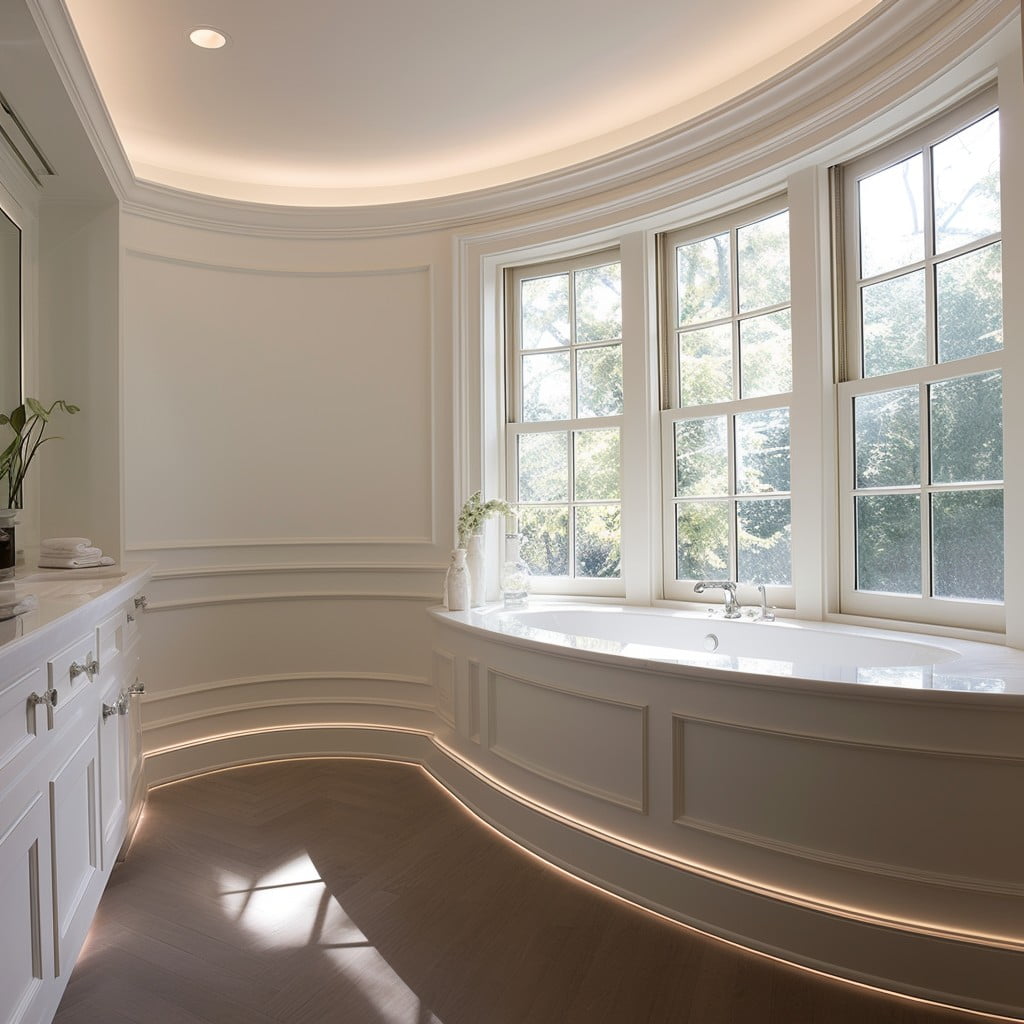
It’s often used in traditional or formal bathroom designs to add elegance and sophistication. Cove molding can be made from various materials such as wood, plaster, or polyurethane foam.
It’s typically installed where the ceiling meets the wall but can also be used around mirrors or other features in the bathroom for added detail and interest. When choosing cove molding for your bathroom renovation project, consider its size and style to ensure it complements your overall design aesthetic while adding visual interest to your space.
Baseboard Upgrade
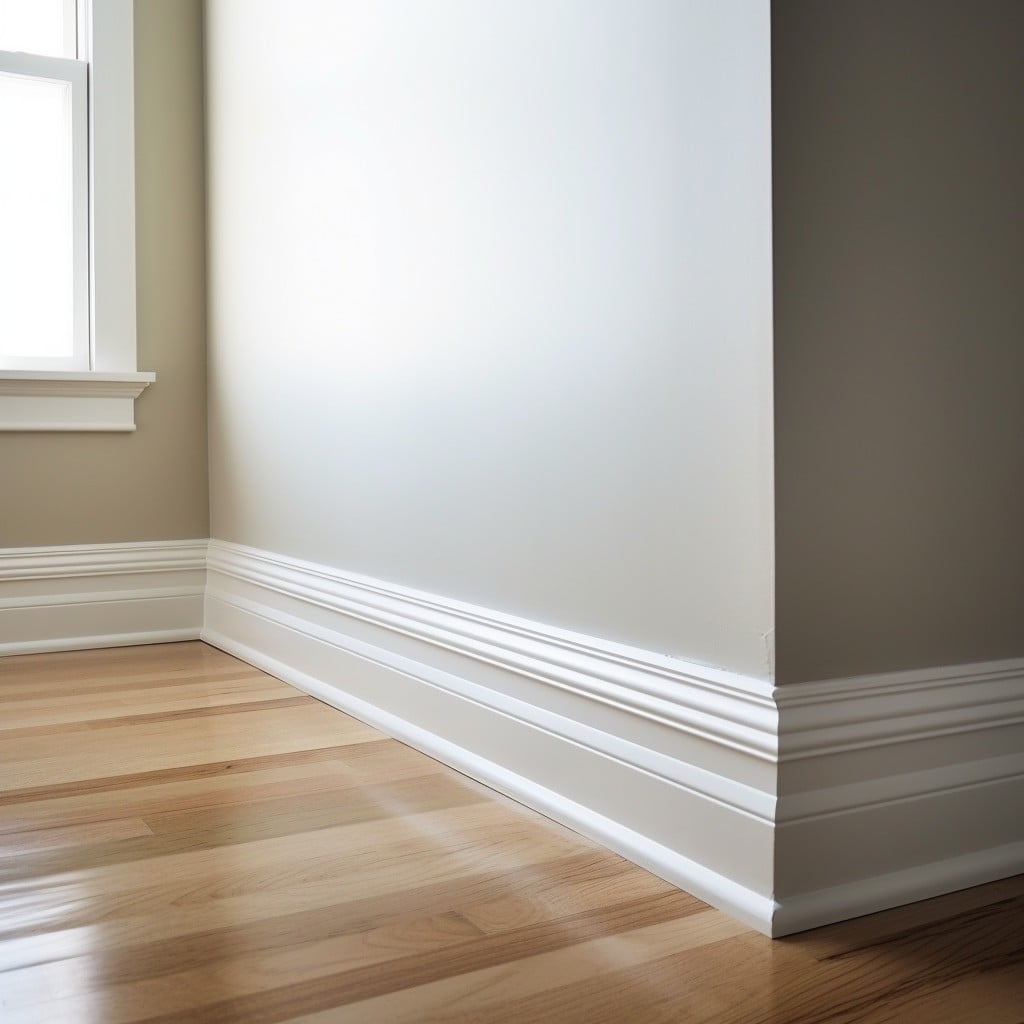
Instead of the standard, plain baseboards that come with most homes, consider upgrading them with something more decorative. You can choose from a variety of styles such as fluted or carved designs that will give your bathroom an elegant touch.
You can paint the baseboards in contrasting colors for added visual interest or match them with other molding elements in the room for a cohesive look. Upgrading your baseboards is an affordable DIY project that will make a big impact on the overall appearance of your bathroom without breaking the bank!
Rope Molding
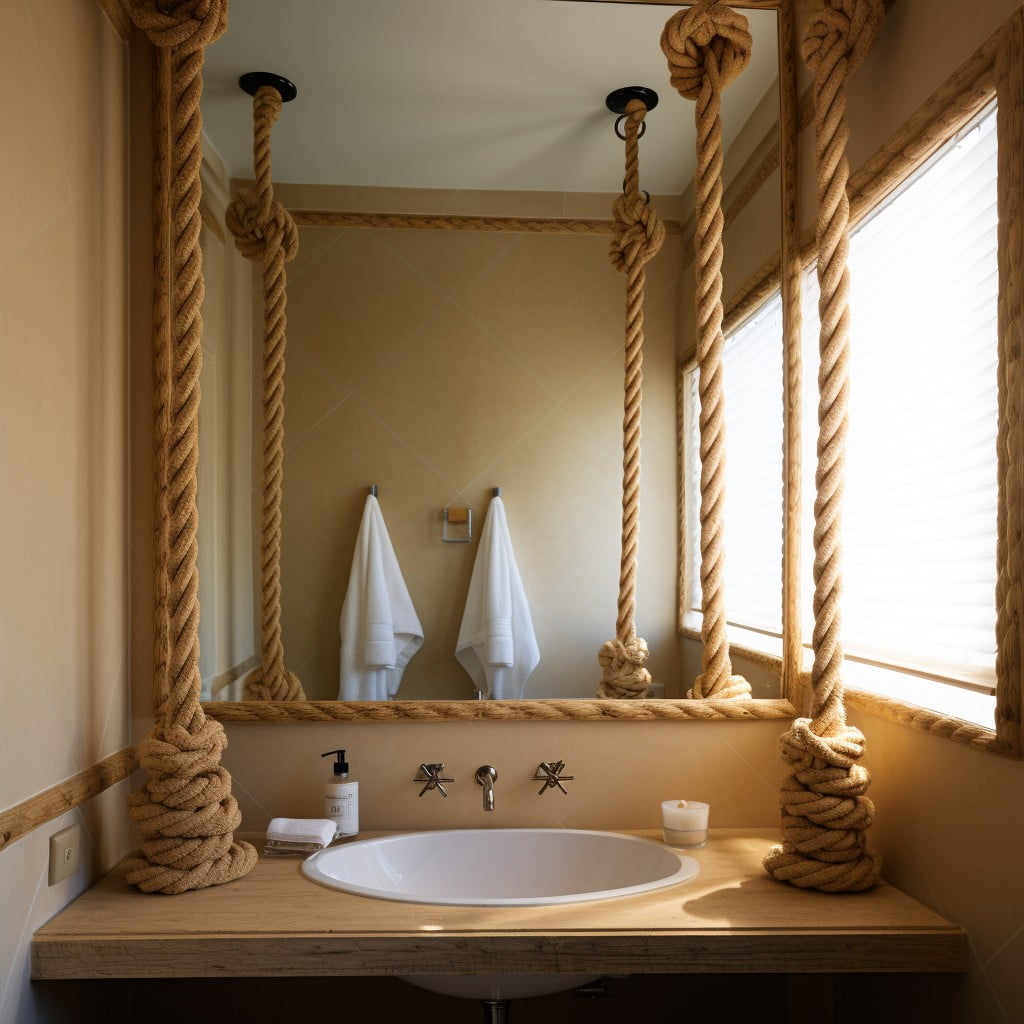
This type of molding features a twisted rope design that can be used as an accent piece or as the main trim around mirrors, windows, or doors. Rope molding comes in various sizes and materials such as wood, plaster, or polyurethane foam for easy installation.
It adds depth to any space with its intricate details while still maintaining a classic look that never goes out of style. Consider using rope molding in your bathroom renovation project for an elegant touch that will impress guests every time they visit!
Inset Wainscoting
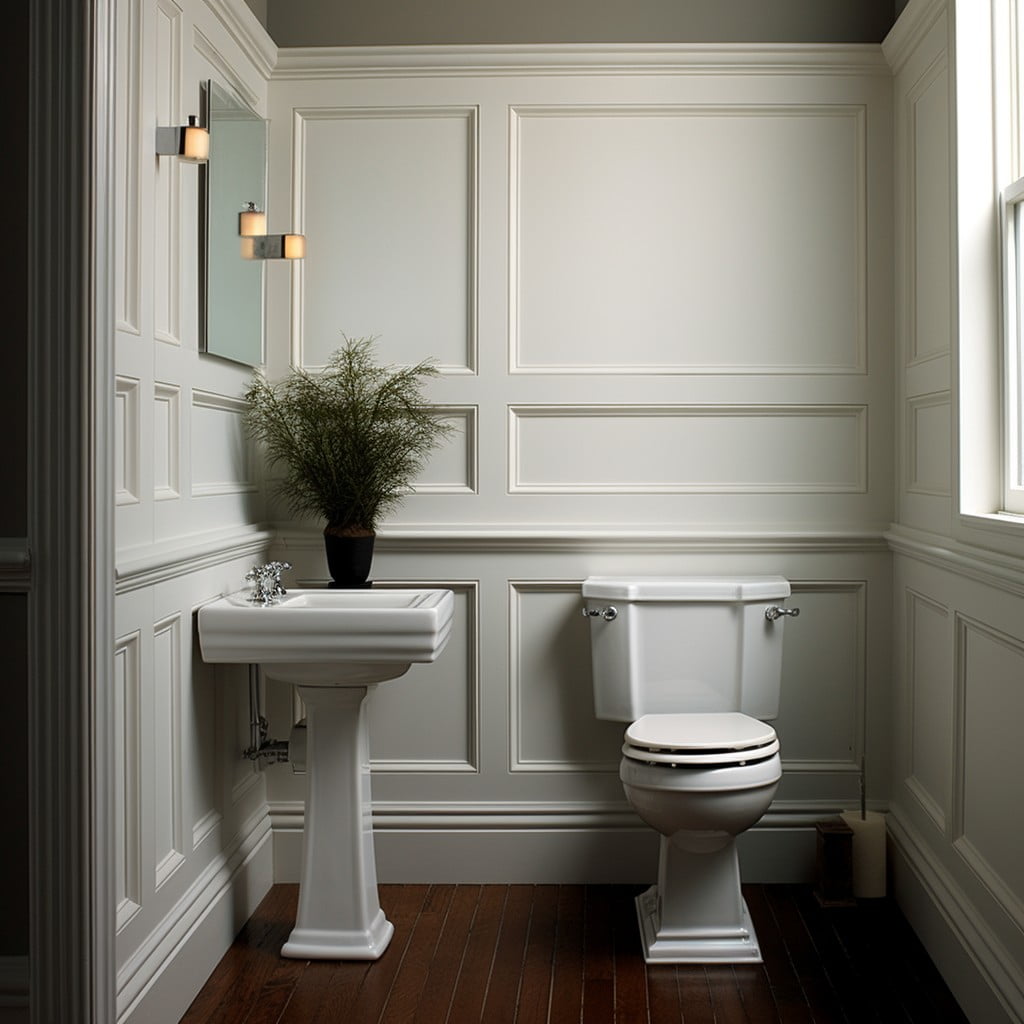
This style of molding involves creating recessed panels within the wall, which are then framed with decorative trim. The result is a classic look that can work well in both traditional and modern bathrooms.
To achieve this look, you’ll need to start by measuring out the size of your panels on the wall. Once you have these measurements, use a saw or router to cut out each panel section from the drywall.
Then install thin strips of wood around each panel opening as framing.
Next comes adding decorative trim pieces around each frame for an elegant finish. You can choose from various styles such as simple rectangles or more intricate designs like diamonds or squares depending on your preference.
Stained Wood Accents
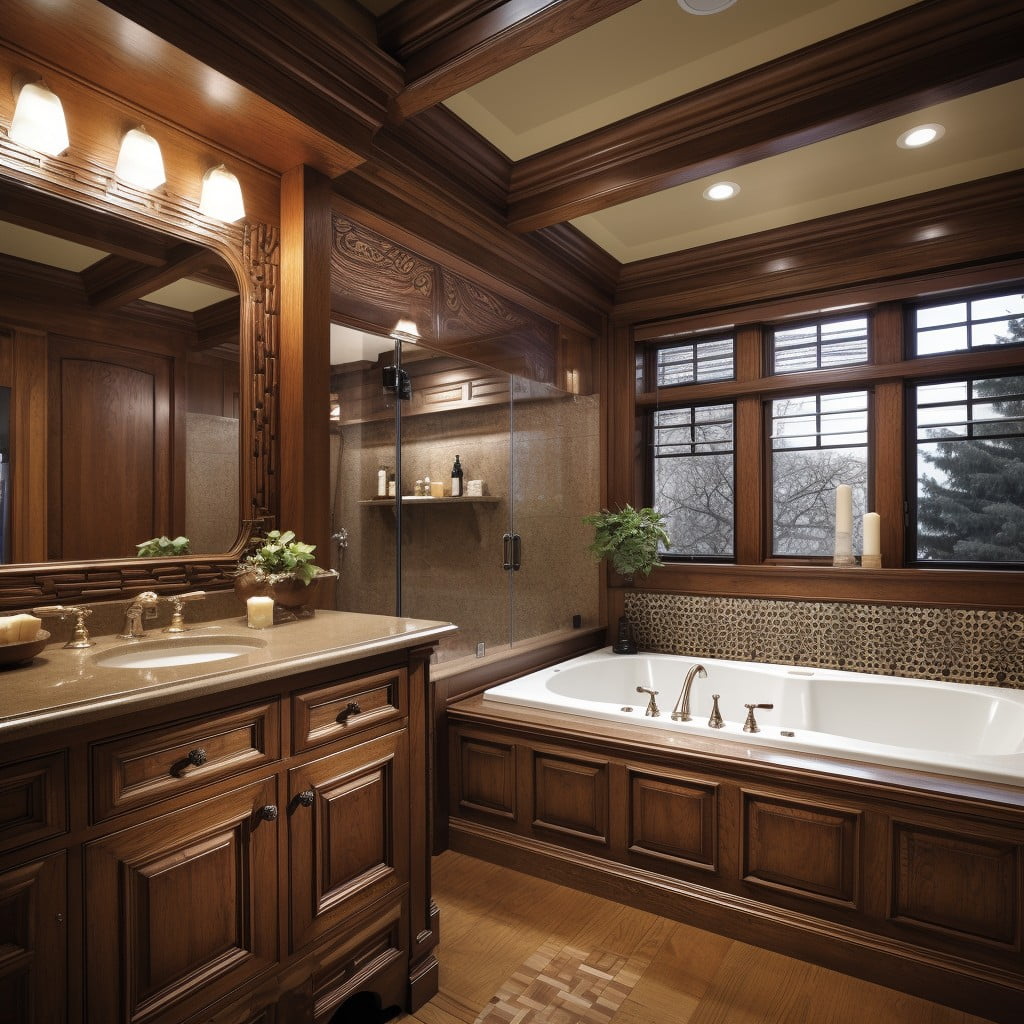
This can be achieved through the use of wooden trim around mirrors or windows, as well as wooden shelves or cabinets. Stained wood adds a natural element that pairs well with other materials commonly found in bathrooms such as tile and stone.
Choose a stain color that complements your existing decor or go for something bold like ebony or mahogany for added drama. Keep in mind that while wood is durable, it does require some maintenance over time so make sure to properly seal any exposed surfaces against moisture damage.
Decorative Plaster Molding
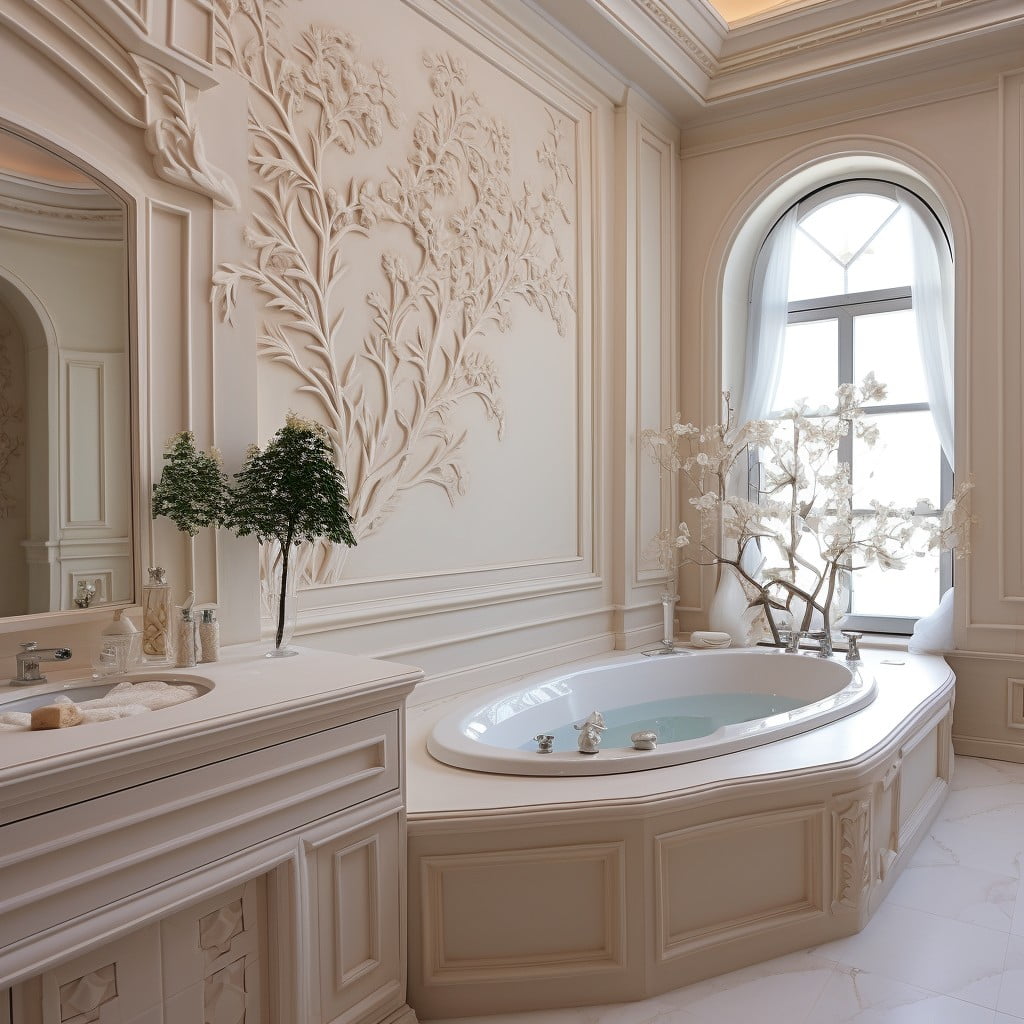
It can be used on the ceiling, walls or around mirrors and windows. Plaster molding comes in various designs, from simple curves to intricate patterns that resemble lacework.
The material is durable and long-lasting, making it an excellent investment for any homeowner looking for a timeless look in their bathroom decor.
When installing decorative plaster molding, it’s essential to hire professionals who have experience working with this delicate material. They will ensure that the moldings are installed correctly without damaging them or causing cracks over time due to improper installation techniques.
One of the benefits of using decorative plaster moldings is its versatility; you can paint them any color you like or leave them white for a more traditional look. They work well with other design elements such as wallpapered walls or patterned tiles.
Rustic Reclaimed Wood Trim
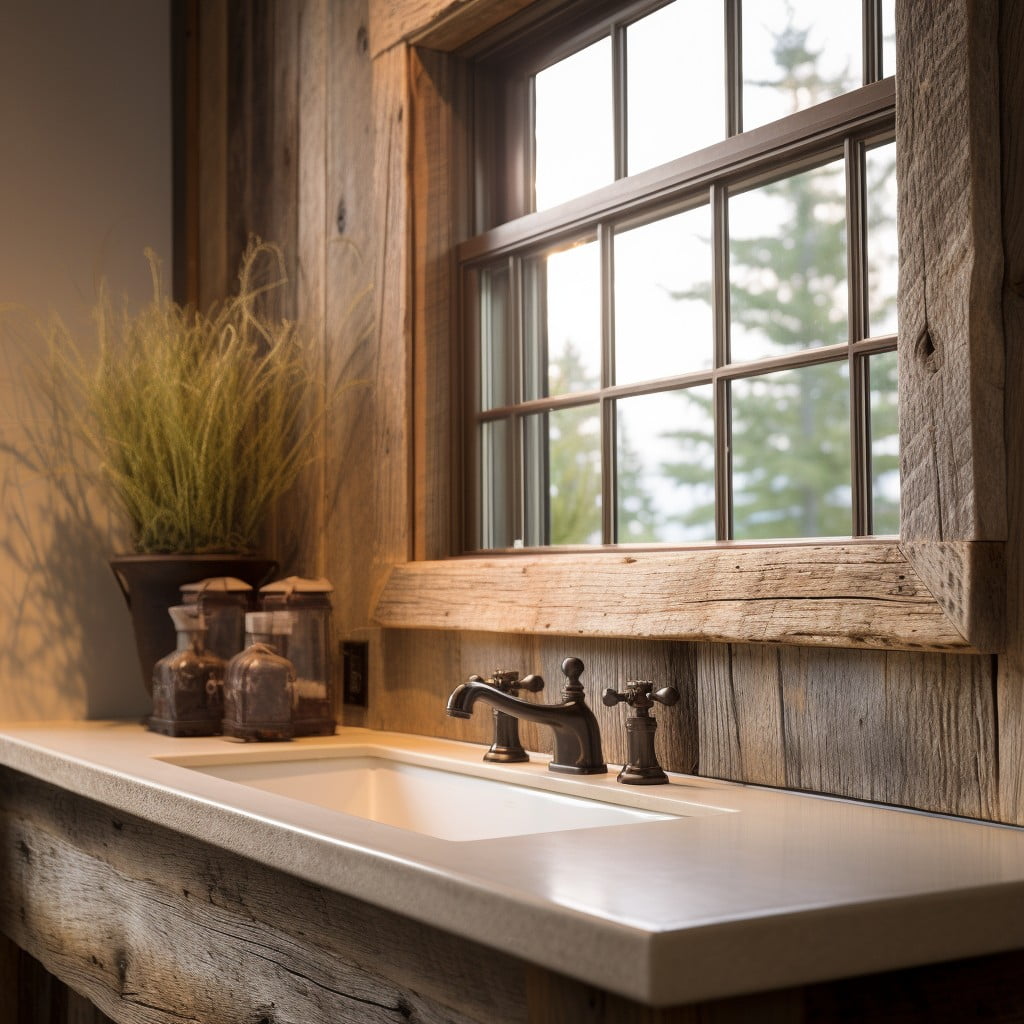
Salvaged wood can be used for baseboards, crown molding, or even as an accent wall. The natural texture and imperfections of the wood create a unique look that cannot be replicated with new materials.
To ensure that the reclaimed wood is safe for use in your home, make sure it has been properly treated and cleaned before installation. You can also consider using eco-friendly finishes such as beeswax or linseed oil to protect the surface while maintaining its rustic charm.
With rustic reclaimed wood trim, you’ll bring a touch of nature into your bathroom while adding style and personality at the same time!
Intricate Cornice Molding
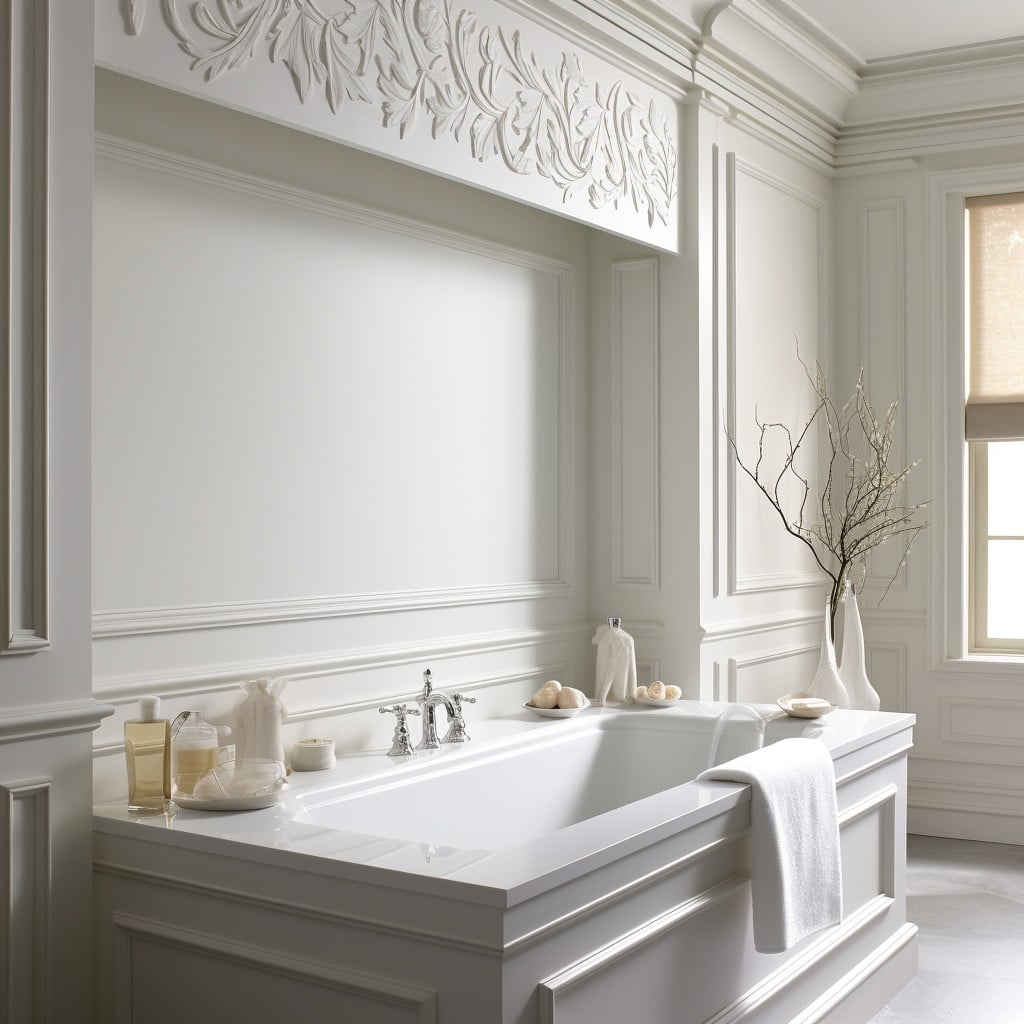
This type of molding is typically made from plaster or wood and features intricate designs that can range from simple curves to elaborate patterns. Cornice molding can be installed at the top of walls, around windows, or even on the ceiling for a truly dramatic effect.
One popular option for cornice molding in bathrooms is to use it as an accent piece above the shower area. This creates a focal point in the room and draws attention upward, making the space feel larger than it actually is.
When choosing intricate cornice moldings for your bathroom, consider selecting pieces with clean lines that complement other design elements in your space. You may also want to choose moldings with subtle details if you have bold wallpaper or tile patterns already present in your bathroom.
Adding intricate cornice moldings can transform any ordinary bathroom into an elegant retreat where you’ll love spending time getting ready each day!
Recap
